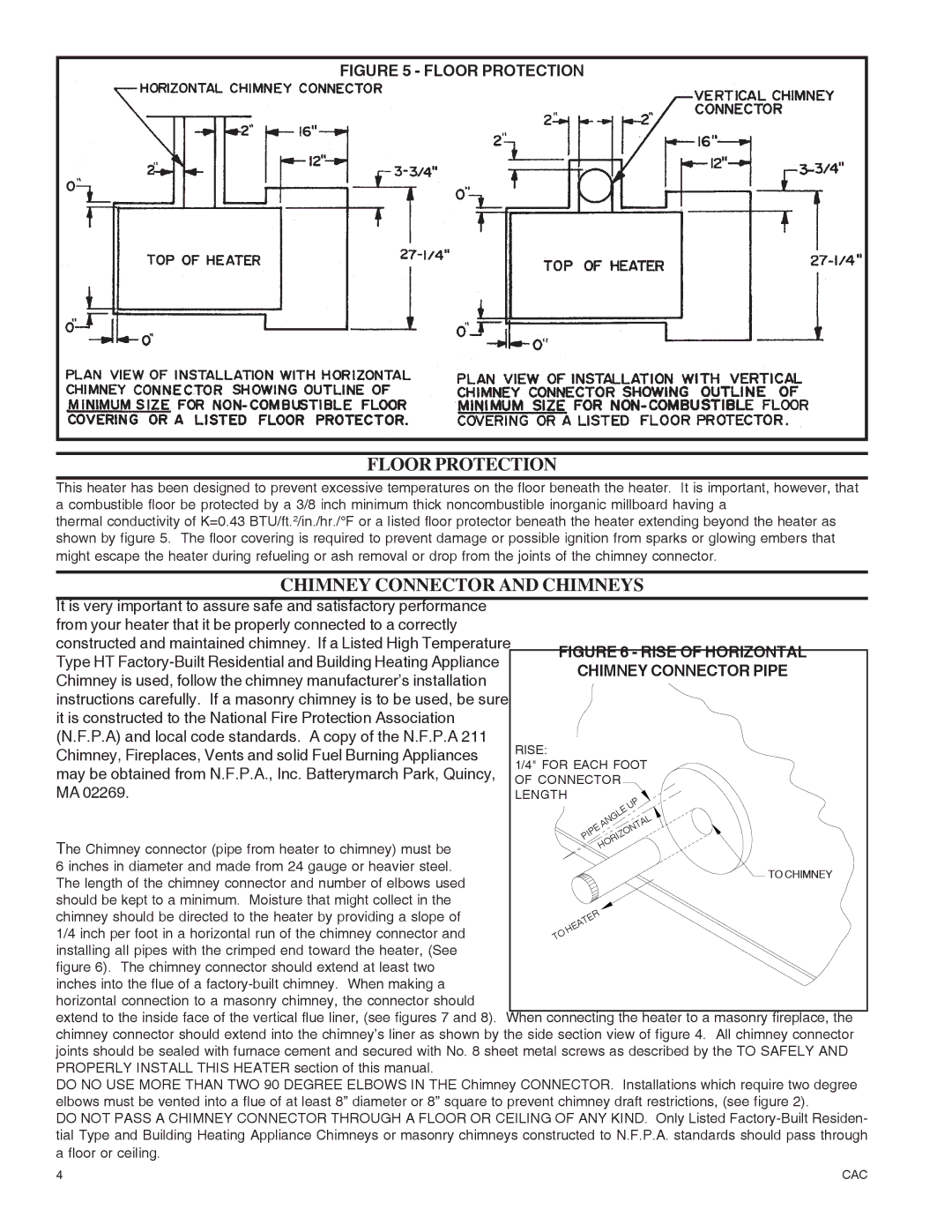DR6 specifications
The United States Stove DR6 is a prominent addition to the world of heating appliances, known for its blend of functionality, efficiency, and design. This wood-burning stove is an ideal choice for those seeking an effective and eco-friendly heating solution for their home.One of the standout features of the DR6 is its robust construction, featuring a heavy-duty steel body that is built to withstand the rigors of daily use. The stove is designed to provide durability and longevity, ensuring years of reliable performance. The large firebox is capable of accommodating logs up to 18 inches long, providing ample space for a sustained burn, which translates to more heat for extended periods.
The heating efficiency of the DR6 is noteworthy, boasting an impressive 78% efficiency rating. This is achieved through advanced combustion technologies that maximize heat output while minimizing smoke and emissions. The secondary combustion system is particularly beneficial, as it ensures that burning gases are ignited before being released into the atmosphere, leading to cleaner combustion and reduced environmental impact.
Another key characteristic of the DR6 is its user-friendly operation. The stove features a convenient air control system, allowing users to easily adjust the airflow for optimal burn rates. This flexibility ensures that users can tailor the heating experience according to their specific needs, whether they require a quick burst of heat or a slower, more consistent burn.
The aesthetic appeal of the DR6 is also worth noting. With a sleek design and classic cast iron door, it fits seamlessly into various interior styles, from rustic cabins to modern homes. The large viewing window provides a cozy ambiance, allowing users to enjoy the flickering flames while maintaining a comfortable temperature.
Safety features have not been overlooked with the DR6. It includes a built-in safety feature that prevents overheating, and the legs are designed to allow for proper clearance from combustible materials. Additionally, the stove meets the stringent safety and emissions standards set by regulatory bodies, making it a responsible choice for homeowners.
In summary, the United States Stove DR6 combines efficiency, safety, and aesthetic appeal, making it a top contender in the wood-burning stove market. Its robust features, advanced technologies, and attention to design create a dependable heating solution that enhances any living space while being eco-conscious. For those in search of a reliable and stylish heating option, the DR6 is undoubtedly worthy of consideration.

